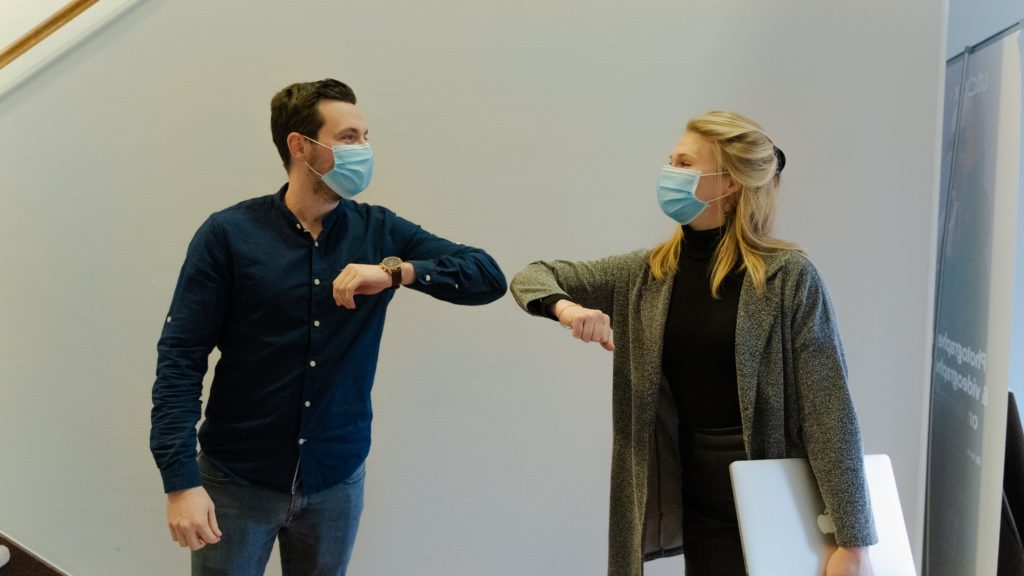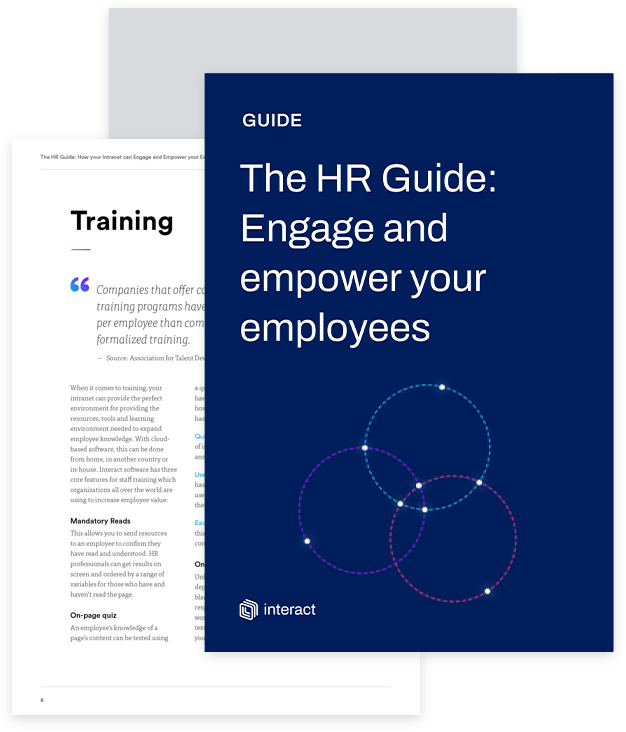In July 2021, the renowned psychologist, Adam Grant, wrote a breakout article for the New York Times. In it, Grant suggested that languishing—a nagging sense of fatigue and apathy about life and work—is “the dominant emotion of 2021”. Organizations are already focused on supporting employees experiencing mental health problems as a result of the pandemic, but the evidence suggests that this support may now need to be broadened to support languishing employees too.
As this new form of wellbeing crisis receives publicity, however, HR and internal communications teams already charged with improving employee experience will question how it can be approached and what tools and technologies they have at their disposal to boost morale and “beat the blah”.
We asked experts to share their thoughts on what languishing is and how employers can set up digital workplaces so that intranet software can be actively used to foster connection and engagement.
What is languishing?

Although Adam Grant is its most recent exponent, the idea of psychological languishing emerged in 2002, in a paper by the American sociologist Corey Keyes. Keyes described mental health as a spectrum, with languishing at one end and flourishing at the other. In Keyes’ terms, languishing is not the same kind of crisis presented in other mental health problems, such as major depressive episodes, but is an “absence of mental health”. Counterposed to the good emotional activity and positive feelings associated with flourishing, languishing is defined as:
Psychosocial impairment in terms of perceived emotional health, limitations of activities of daily living, and workdays lost or cutback.
Corey L. M. Keyes – The Mental Health Continuum: From Languishing to Flourishing in Life
Empower and engage your employees – an intranet for HR
What does this mean in the context of the pandemic and the period since early 2020? If you or your colleagues are not exactly at crisis point, but just a little less joyful and a little less interested in hobbies or personal relationships, you might be languishing. If you’ve wondered if you really need another duvet day or you’re spending an extra hour in bed, not resting but just not wanting to get up and face the day, you could be languishing.
In Adam Grant’s words:
Languishing is a sense of stagnation and emptiness. It feels as if you’re muddling through your days, looking at your life through a foggy windshield.
Adam Grant – Feeling Blah During the Pandemic? It’s Called Languishing
The cost of mental health disorders in the workplace

Even without the impact of the COVID-19 pandemic, mental health disorders exist at alarming levels. Johns Hopkins reports that mental health problems account for several leading causes of disability in developed markets and that approximately 26% of American adults suffer a diagnosable mental disorder each year.
Aside from the terrible human cost of this epidemic, the Center for Disease Control (CDC) suggests that depression causes an estimated 200 million lost workdays each year. This may cost US employers anywhere between $17 billion and $44 billion from absenteeism, loss of productivity, negative workplace culture, and poor employee experience.
Empower and engage your employees – an intranet for HR
Does languishing present the same kind of problem for organizations?
On the surface it would seem not, but the caveat to that would be not…yet. Keyes’ research on languishing individuals shows that this diminished emotional state can be a marker of future episodes of major depression and anxiety disorders. Recent research on healthcare workers in Italy also indicates that those who were already in a languishing state prior to the pandemic were more likely to receive a diagnosis of post-traumatic stress disorder than their flourishing colleagues.
In this context, responsible organizations are bound both from a commitment to their people, but also to their own future profitability, to adopt procedures now that can support languishing employees to flourish and so to avoid more dramatic episodes in the future.
How to support languishing employees

If all of the above sounds a little hopeless, the good news is that it’s not. There are numerous ways employers, HRs, and communicators can support languishing employees that will help them rediscover their:
- Productivity and focus
- Connection with colleagues
- Engagement with company culture
- Positive employee experience
Listen before you act
Matt Erhard, a managing partner at the leading Canadian recruiter, Summit Search Group, believes that organizations should listen to employees first to better retain and support them.
There’s a lot of focus right now on the tough labor market and how to navigate it, and I think it’s just as important for companies to look at how they can improve morale to keep the employees they have and avoid having to hire in the first place.
Survey employees to find out why they’re feeling ‘blah’. There are a lot of factors that can cause low morale. Knowing the exact source of the problem in your team can help you better refine your approach to address it. This kind of survey can also help start a conversation about morale and workplace mental health across the team.
Matt Erhard – Managing Partner, Summit Search Group
As with all conversations that involve mental health and wellbeing, not everyone will be comfortable with talking in one-to-ones or through long written communications. This may mean that it’s hard to get a sense of how they are feeling, but short employee surveys can at least allow organizations to perform temperature tests anonymously.
Even if you choose to lead with questions that are more limited in scope and number than a full employee satisfaction survey, listening to lots of shorter opinions may reveal trends that prompt senior leaders to engage with a new wellbeing program that hadn’t been previously considered.
Empower and engage your employees – an intranet for HR
Personalize employee experience
According to Associate Professor of Communication, Miriam Ruth Bowers-Abbott, improvement starts with a focus on returning to genuine interaction.
In general, the pandemic has created something of an online meeting culture, and there are pitfalls associated with sitting in meetings all day, broadcasting, but not really engaging.
It’s engagement, interaction with other humans, that powers and inspires us. So, first, I’d suggest looking at meeting strategies. Any meeting longer than 30 minutes needs to be looked at critically. And meetings with more that 7-ish people (that’s the maximum number for meaningful engagement) need to be weeded out.
Eliminate those, and then there’s more time for real engagement. The right kind of engagement varies from person-to-person. Email, text, phone call, or even a one-on-one virtual meeting, it all can make a difference.
Miriam Ruth Bowers-Abbott, MA – Associate Professor, Mount Carmel College of Nursing
While it may only seem a small thing, to reinforce this focus on providing internal communication interactions that individuals prefer (and so will respond better to), communicators can also use digital workplace tools to further personalize employee experiences. By enabling users to select the content topics they are most or least interested in, they can take control and dynamically finetune what they see on their homepage. Giving users a feeling of control may be another helpful step in supporting them to positively engage with company culture.
Instil languishing employees with purpose
Therapist and coach, Rich Heller, is clear on the value of purpose-led work in supporting individuals to flourish.
Human beings crave a sense of purpose. If they’re not finding their sense of purpose at work, they seek it in other places. However, in the current environment, people are confronting the limitations of their partnerships at home, the limitations of achieving their dreams for their families, which contributes to this general sense of languishing.
In theory, every business is founded on a mission and vision. Often, companies lose sight of this as they get caught up in the day-to-day operations of production and/or service creation. The first step would be for every business to resurrect and refocus on their sense of mission and vision. What’s the difference that they make in the world? How can they celebrate this with their employees? How can they do this in a way that feels authentic?
Rich Heller – Therapist, Rich in Relationship
There are lots of ways to accomplish this celebrating of mission but one key one is to return to impactful storytelling. Stories are remembered up to 22 times more than facts alone and are proven to achieve higher impact, engagement, and emotional connection.
Use your internal communications platform to really bring the work you do to life. Interview your customers, facilitate a ‘day in the life of’ series that follows customers on the ground, share stories of their work, and how your organization helps. Do employees visit customer sites or offices that will enable them to feed back? Could you do a ‘humans of New York’-style interview of those visiting your stores? What about the testimonials consumers leave on your external platforms?
Putting these front-and-center in your organization gives context to the work of your employees, helping them to understand the real-life impact of what they do day-to-day.
Flourishing begins with acknowledgement

If languishing is, as Adam Grant claims, the dominant emotion of our age then the probability is that many people within our teams, including the people we physically or virtually sit besides, are feeling it. As colleagues, we can talk to them, listen, and encourage them to develop healthy intrapersonal communication skills, but as companies and communicators, we can do even more. We can help to make systemic changes capable of shifting a great many languishing employees back onto a course they’ve been derailed from by circumstances.
As part of the new reality that responsible organizations take employee wellbeing seriously, we should acknowledge all the stages on the spectrum of mental health as ones we’re concerned about.
There is no need to wait for crisis points to occur when it’s already possible to put in place procedures that may help. It’s by recognizing and acting on the issues that more companies may be able to move the needle from languishing to flourishing for employees, and for their own long-term goals.


